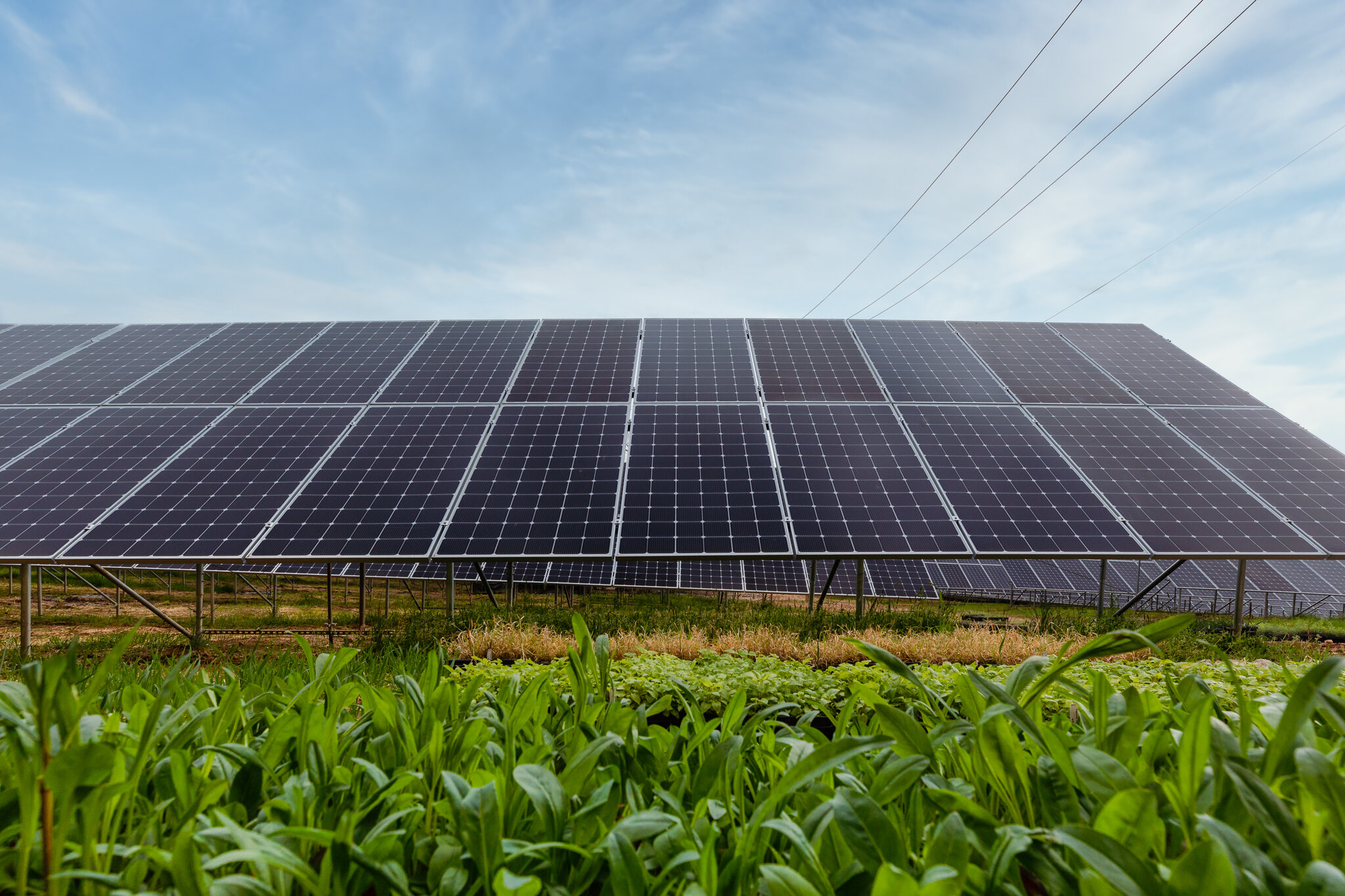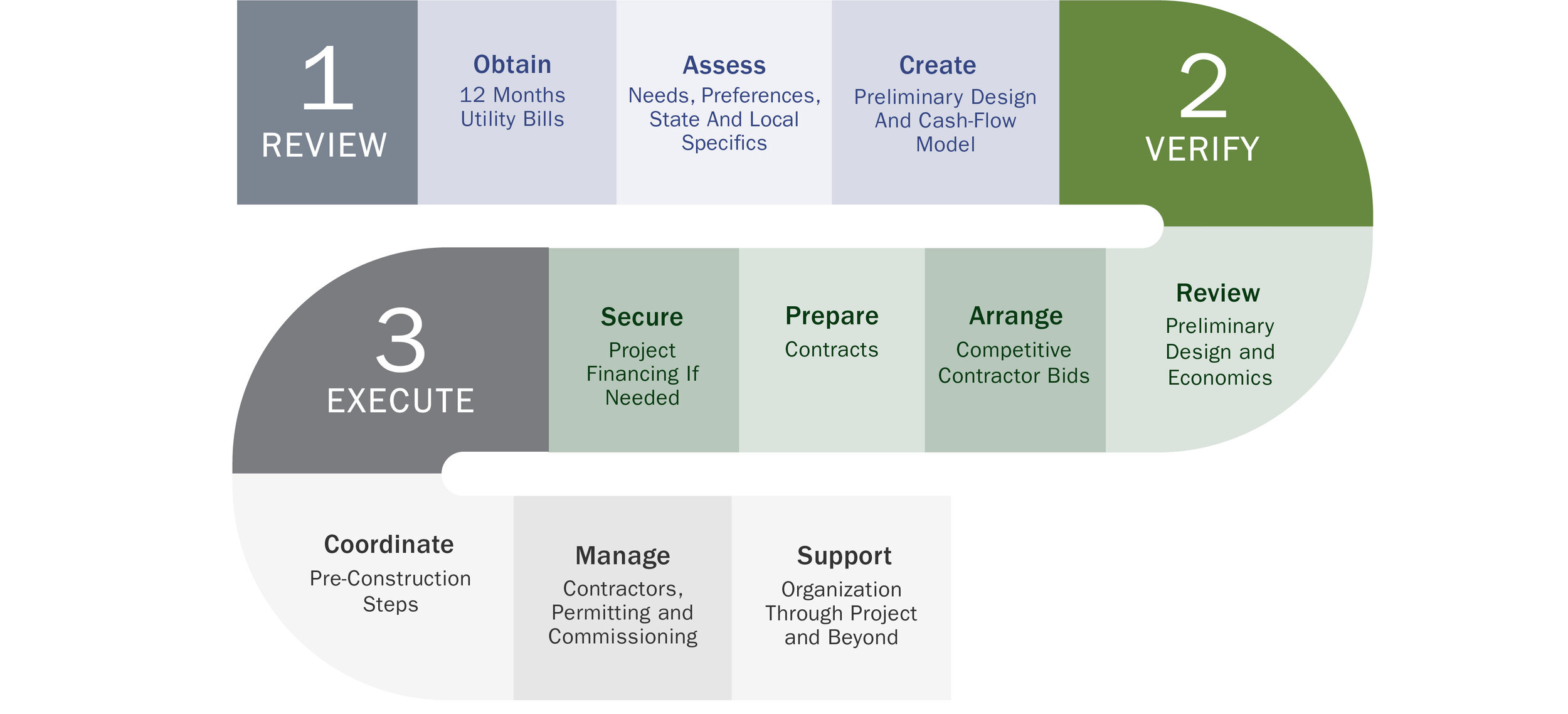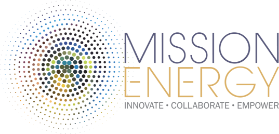
Frequently Asked Questions
Organizations often don’t know where to start when pursuing a solar or energy efficiency project.
Mission Energy is here to help. Below are some of the frequently asked questions we receive.
Want to learn more?
What does Mission Energy do?
Mission Energy serves nonprofits with clean energy solutions that advance their mission. We provide turnkey project development, funding, and implementation services specifically for nonprofit organizations throughout the US. We work to empower any nonprofit organization to implement and benefit from clean energy projects.
Learn more about Our Team and What We Do.
Who owns Mission Energy?
We are a private company with offices in Northern Virginia and Colorado. Our team’s professional background integrates development, real estate, financing, engineering, management and operations in the solar and energy efficiency industries.
Who are Mission Energy's clients?
We have the expertise to develop projects for any nonprofit, with a particular focus on faith-based organizations. As nonprofits, these organizations cannot directly utilize the federal and state tax incentives available for owning and operating their own solar power. Additionally, nonprofits must effectively manage their limited resources in order to fulfill their missions. We strive to make this difficult task easier by using our expertise to free up resources for our nonprofit clients.
What are the more common goals for nonprofits interested in solar and energy efficiency?
Some of the most common goals of our nonprofit clients include:
- Determining if solar and energy efficiency options across their real estate are economically beneficial. Common financial goals include reducing their energy demand and costs, making energy costs more stable and predictable, creating income from unused roofs or land, and gaining access to third-party capital to pay for these solutions.
- Enlisting a trusted, independent and collaborative ally who can provide expertise to assist them in making informed decisions. Moreover, this partner needs to understand the unique structures and challenges that nonprofits present.
- Learning about the various options for funding their project, and gaining access to capital resources as needed.
- Establish a relationship with an “owner’s representative” who can oversee all the various steps required to have these projects designed, permitted, financed and built properly. This trusted representative needs to be able to vet contractors and guide the nonprofits through the legal and financial due diligence processes.
- Undertake projects that produce measurable environmental benefits that can be used to inform and inspire their community, donors and employees, and other stakeholders.
What is a program model to fund solar for nonprofit real estate?
Mission Energy created and manages the Catholic Energies program on behalf of the Catholic Climate Covenant, a nonprofit organization. Through this program, we provide solar development services specifically for Catholic-owned properties nationwide. To-date, we have developed and managed installations for more than 20 Catholic properties nationwide such as parishes, schools, nursing homes, cemeteries, monasteries, convents, motherhouses, and retreat centers.
How does Mission Energy develop a project?
The client makes all key project development decisions, such as approvals on final design, the contractor who will build it, energy efficiency upgrades, and financing preference. Mission Energy develops projects collaboratively through a series of steps for the client to make necessary decisions, as illustrated here:

How does Mission Energy get paid?
As a turnkey project developer, we get paid only if a project is successfully completed. Our fee is paid by whatever party ultimately pays for the project. Typically, that is a bank or other third-party financing source. We contribute a portion of our fee to many of the nonprofit organizations for which we work.
How does Mission Energy optimize financial benefits for clients?
The more energy expenses saved or income produced from solar, the more financial resources our client then has available to serve its mission. Thus, Mission Energy takes a holistic approach, looking at any and all creative measures to impact the economic benefits. Some examples:
- The size of the solar design can make a difference in optimizing savings and lowering risks. If the design is large enough for a specific meter, it can qualify for a utility tariff change that reduces costs.
- Combining solar with energy efficiency measures can impact both the supply costs and demand charges of a client’s utility bill. Several Mission Energy projects have combined solar, LED lighting retrofits and other energy efficiency measures together to optimize energy cost savings.
- The more competitive the solar (or other) contractor pricing, often the more savings can be generated. Mission Energy negotiates those prices on the client’s behalf. Mission Energy’s experienced project management team works closely with contractors to optimize the design of projects to get the most cost-competitive project possible.
- For financing projects (either self-financed or by a third party), the less expensive that cost of capital is, the more likely a client will save money. Mission Energy has built a national network of organizations that will finance nonprofit solar projects. Mission Energy identifies the best partners with the more favorable terms specific to a client’s project to help optimize savings.
What should our organization do first?
The first step, a Feasibility Study, is often the most important for clients because this provides them a comprehensive and holistic understanding of the solar and/or efficiency design, costs, potential savings and income, funding options and timing necessary for their project to be completed. We provide this first step at no cost and without any expected obligation. It provides the nonprofit organization with information it needs to make fully informed decisions regarding whether or not the project aligns with their criteria and objectives.
What if our organization has a relationship with a local solar contractor it trusts?
That is helpful, and potentially helps shorten the development steps. Most clients don’t know local solar contractors, much less the questions to ask in order to properly vet their qualifications for a specific project. Contractors vary in design, installation, procurement and construction capabilities. After the Feasibility Study, Mission Energy gets final design and construction quotes from contractors in the local market. If a client already has a relationship (or quote) from a contractor, Mission Energy can use that information as part of its competitive analysis to help the client make a final, informed decision on the contractor.
What if our roofs are old or in bad shape?
Solar can’t be installed on roofs in bad shape or at the near end of their life expectancy. Mission Energy’s project managers are experienced in further evaluating roof conditions in collaboration with the local solar contractors. We can also consult with the client’s roofing contractor to judge whether or not roof repairs or replacement are needed first. Depending on local utility regulations, energy consumption, costs and other variables, Mission Energy may be able to finance the roof replacement costs along with the solar construction costs.
